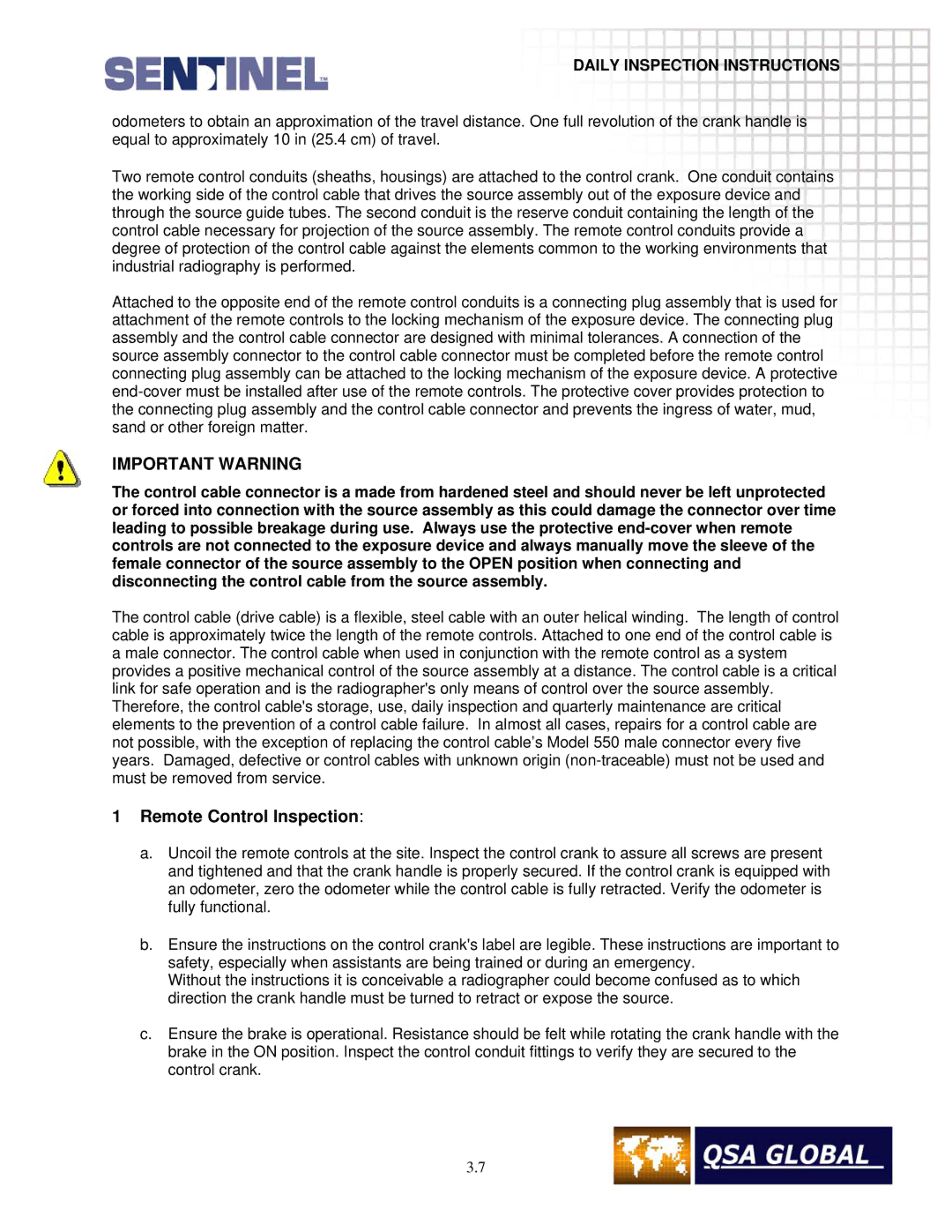
DAILY INSPECTION INSTRUCTIONS
odometers to obtain an approximation of the travel distance. One full revolution of the crank handle is equal to approximately 10 in (25.4 cm) of travel.
Two remote control conduits (sheaths, housings) are attached to the control crank. One conduit contains the working side of the control cable that drives the source assembly out of the exposure device and through the source guide tubes. The second conduit is the reserve conduit containing the length of the control cable necessary for projection of the source assembly. The remote control conduits provide a degree of protection of the control cable against the elements common to the working environments that industrial radiography is performed.
Attached to the opposite end of the remote control conduits is a connecting plug assembly that is used for attachment of the remote controls to the locking mechanism of the exposure device. The connecting plug assembly and the control cable connector are designed with minimal tolerances. A connection of the source assembly connector to the control cable connector must be completed before the remote control connecting plug assembly can be attached to the locking mechanism of the exposure device. A protective
IMPORTANT WARNING
The control cable connector is a made from hardened steel and should never be left unprotected or forced into connection with the source assembly as this could damage the connector over time leading to possible breakage during use. Always use the protective
The control cable (drive cable) is a flexible, steel cable with an outer helical winding. The length of control cable is approximately twice the length of the remote controls. Attached to one end of the control cable is a male connector. The control cable when used in conjunction with the remote control as a system provides a positive mechanical control of the source assembly at a distance. The control cable is a critical link for safe operation and is the radiographer's only means of control over the source assembly. Therefore, the control cable's storage, use, daily inspection and quarterly maintenance are critical elements to the prevention of a control cable failure. In almost all cases, repairs for a control cable are not possible, with the exception of replacing the control cable’s Model 550 male connector every five years. Damaged, defective or control cables with unknown origin
1Remote Control Inspection:
a.Uncoil the remote controls at the site. Inspect the control crank to assure all screws are present and tightened and that the crank handle is properly secured. If the control crank is equipped with an odometer, zero the odometer while the control cable is fully retracted. Verify the odometer is fully functional.
b.Ensure the instructions on the control crank's label are legible. These instructions are important to safety, especially when assistants are being trained or during an emergency.
Without the instructions it is conceivable a radiographer could become confused as to which direction the crank handle must be turned to retract or expose the source.
c.Ensure the brake is operational. Resistance should be felt while rotating the crank handle with the brake in the ON position. Inspect the control conduit fittings to verify they are secured to the control crank.
3.7
